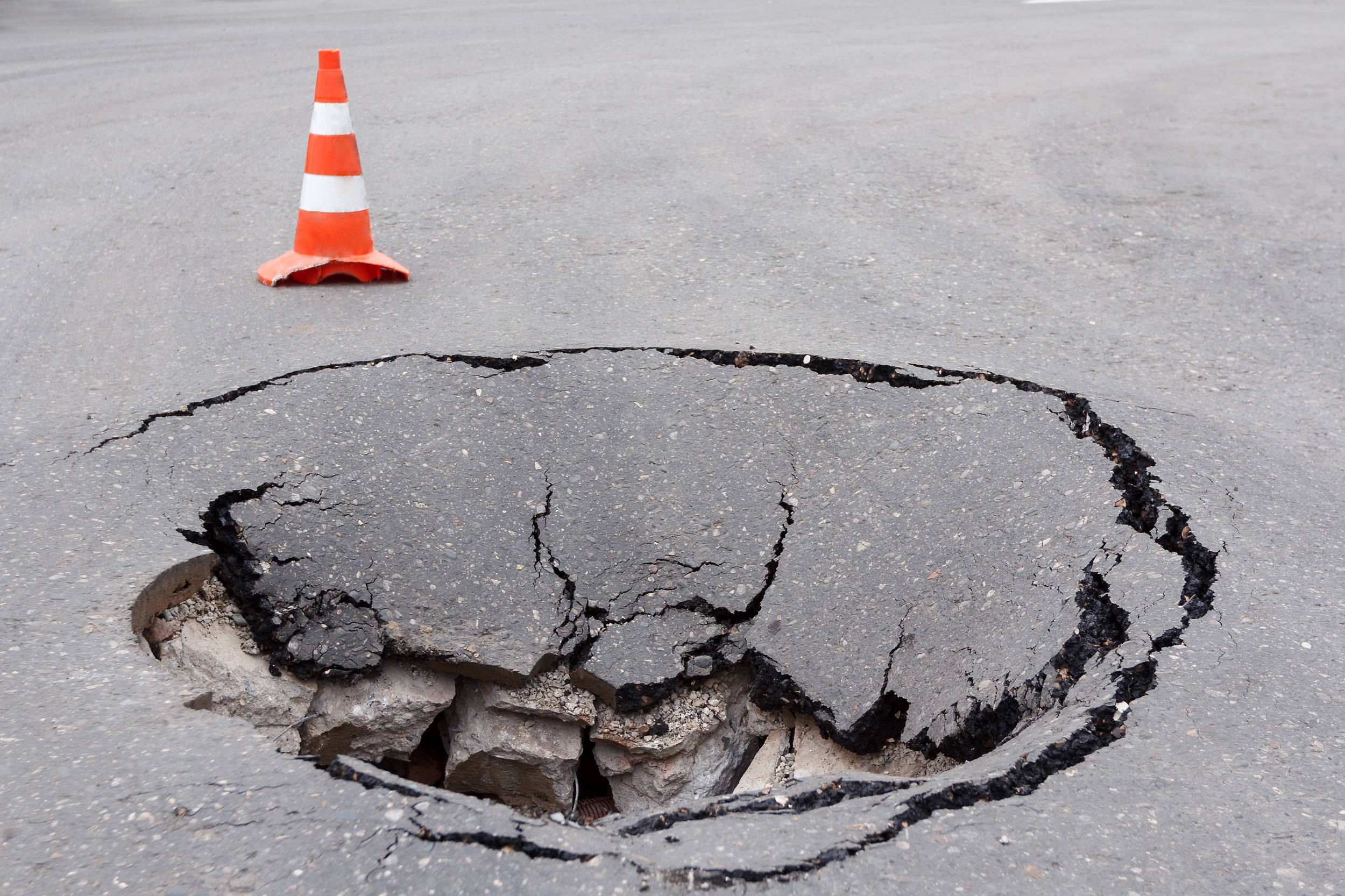Bexleyheath Sinkhole: Sinking in the Suburbs

Last week, a major new sinkhole appeared in an unassuming residential street in Bexleyheath, south east London. It caught the local headlines as the video of the hole opening up across the full width spread virally. Of greatest concern was the immediate impact to local traffic, infrastructure and potentially surrounding houses. But what lay beneath that caused this sudden and dramatic event? Our geology consultants were keen to analyse the data and start to put the evidence together.
The first thing to realise is that this is not a new or even a surprising incident for the area. Bexleyheath is situated above some specific geology prone to these sorts of features and historical records, along with personal accounts, reveal this is not the first time such a hole has appeared here.
The Local Geology
Geological mapping shows a bed of limestone, in this case chalk, overlain by Thanet sands. Chalk can dissolve when in prolonged contact with water and the erosion can speed up if there is an increased flow acting on it. Similarly, whilst the overlying sands are not dissolvable, they are less compacted, less consolidated and this can often lead to them being displaced and washed away, following the introduction of moving water.
Sinkholes can be attributed to a number of key factors. On occasion, they can be the result of historic mining activity. Where a human-made void collapses beneath the surface, the overlying strata also falls, eventually migrating to the surface.
But this is less common than you may think. In many cases sinkholes can appear following increased rainfall entering the ground through natural holes and fissures. This eventually makes these holes greater, increasing the water flow that reaches the underlying soluble material and in turn making the cavity bigger. This can become unstable as the roof of the cavity-bearing weight is affected by traffic or new development and could lead to the potential failure of the cavity and its collapse.
Are Water Pipes to Blame?
But much of the time it can also relate to damaged water pipes. Given the age of much of the network, especially in our cities, a leak can quickly exert damage around it unnoticed for many months.
In the case of Bexleyheath where we have the sand beds present, leaking pipes have the ability not only to wash finer material into potential cavities, but it is also possible the pipe network can carry away the finer sands further along into the water network. It is hard to narrow down on the exact cause of this sinkhole and it won’t be until thorough geotechnical investigations have been complete that we will likely get our final answer.
Figure 1 – extract from our Avista report showing extensive mining cavity records in the area
Mines and Swallow Holes
But past mining may be a material factor. Our own extensive archives show the area around Bexleyheath was subject to chalk mining. However, due to the informal and unsystematic manner of how it was extracted, records are very poor and incomplete. It’s possible that it had taken many decades for the water action to erode the strata above the informal mining workings and undermine the road and caving in under pressure.
There are also natural geological factors at play that could have an equal impact on the neighbourhood. Our geology mapping shows a number of “swallow holes or dissolution hollows” locally, but more interestingly, two very close to the site of this most recent sinkhole.
We will await the findings of any subsequent investigations to find the exact cause of the 2022 Bexleyheath Sinkhole and will report back.
Figure 2 – Detail from mapping showing reported subsidence, with the most recent sinkhole in bold. Additional four points recorded as “swallow holes or dissolution hollows” on geological mapping
The Growing Climate Threat
The Bexleyheath story is another clear example of how water and soluble geology below our neighbourhoods can combine to create real risks for homeowners. This can be exacerbated by any local history of mining that enables the water to exploit the honeycomb beneath.
But if you add the dimension of climate change, locally heavy rainfall events will accelerate as our atmosphere warms. This in turn could create more cavities in prone areas like Bexleyheath. Our recent white paper revealed the extent of potential past mining activity for minerals other than coal across the country. Looking to the future, our forward climate analysis predicts an 800%+ increase in subsidence risk in the next 50 years.
It also underlines how important it is for conveyancers to ensure they access an environmental search that includes all forms of mining. Our Avista report combines all of the searches needed to satisfy practice notes for contaminated land and flood risk, but also includes a full CON29M as well as analysis nationwide on 60+ minerals, including chalk.
For more information on Avista call us on 01273 257 755 or email info@groundsure.com
Date:
Jul 3, 2022
Author:
Tom Harvey-James

